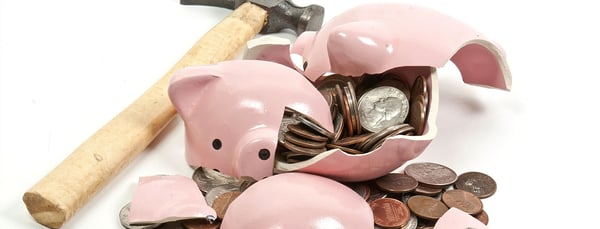Housing was a defining issue of the 2022 federal election, and the Labor Party win brings with it a raft of policy measures designed to address issues in Australia’s property market. So, what does a Labor Government mean for the Brisbane Property Market?
In 2019, Labor proposed changes to taxation policy heading into the election, particularly those relating to a tightening of negative gearing and capital gains tax discounts, which put a handbrake on confidence and listings pre-election.
In 2022, with an absence of tax reform and a neutral approach to policy reform relating to property investment and ownership, markets have functioned without significant disruption.
There is little concern that the new government will have any major effect on the property market in the immediate future. However, with housing affordability one of the main concerns for Australians, the Labor government has promised to enact multiple policies centring on first-home buyer schemes and affordable housing.
If the Albanese government holds strong to its promise of a variety of schemes, we could see some changes in supply and demand in certain markets. Let's look at how each of the proposed schemes may shake things up in the property market.
Help to Buy Scheme
At the forefront of Labor’s housing policies was the ‘Help to Buy’ scheme. This is a shared equity arrangement between a home buyer and the government, where the government will contribute up to 40 per cent of the price of a new home and up to 30 per cent of the price of an existing home for 10,000 eligible parties per year.
Eligibility criteria means you can only earn up to $90,000 as an individual and $120,000 as a couple. These buyers will only need a 2 per cent deposit and will save on Lenders Mortgage Insurance. There is the potential to buy back a share of the property as income increases. The added benefit of buyers being able to ‘top-up’ their ownership stake once in a better financial position is another advantage.
In wrapping up the Labor Government’s initiatives, CoreLogic’s Research Director Tim Lawless says the ‘Help to Buy’ scheme is likely to be popular with prospective home buyers, as it provides a more affordable entry point to the Australian housing market for those individuals on low-to-mid level incomes.
The purchase amount is capped at $650,000 in Brisbane and other Queensland regional Centres, leaving eligible buyers to look at 101 suburbs for houses and 186 suburbs for units. However, Labor has promised to conduct six-monthly reviews of the First Home Guarantee price caps.
Anyone considering the scheme should be aware of the risks associated with buying on such a small deposit. Looking at the bigger picture, the ‘Help to Buy’ scheme is only addressing the symptoms of housing affordability rather than aiming to fix the underlying issues.
Regional First Home Buyer Support Scheme
Outside of Brisbane, there is a push to support regional housing affordability. Labor’s Regional First Home Buyer Support Scheme will assist 10,000 first home buyers in regional areas to buy a home by providing guarantees of up to 15 per cent of the property's price, only requiring a 5 per cent deposit and removing the need for lender's mortgage insurance. Based on property price caps, the scheme is likely to appeal to those buyers targeting unit purchases or lower-priced regional markets where detached housing values are more affordable.
Other Initiatives
Encouragingly, many of the factors that contribute to worsening housing affordability, such as insufficient land release and restrictive town planning policies will now be part of an expanded remit for the reframed National Housing Supply and Affordability Council NHFIC which would be re-branded Housing Australia.
This could help address the issues making housing unaffordable, while also providing more transparency on government-owned land.The Housing Australia Future Fund is a $10 billion initiative with the objective of funding social and affordable housing properties. Investment in social housing options is long overdue, with the stock of social housing increasing only marginally by 2006.
Lastly, the proposed National Housing and Homelessness Plan will aim to establish key short-, medium- and longer-term reforms making it easier for Australians to buy a home, and rent and provide shelter for homeless Australians. There is little detail so far on this initiative. However, the Labor Party has expressed a commitment to working with a broad range of stakeholders including the states and territories, local governments, industry bodies, superannuation funds and other relevant experts on how to address housing, finance, and urban development.
What now?
It is worth noting that any demand-side incentives, such as the ‘Help to Buy’ scheme, can add upward pressure to home prices. For this reason, the limited number of places, along with price and income caps, will help contain some of the upwards demand that could put upward pressure on prices.
The Labor Government will still have the deal with the fundamental supply and demand variables of the Australian property market, particularly for rentals. Nationally, rental vacancy rates have plummeted to around 1 per cent as employment has surged.
It's not yet clear how the Labor government will plan to tackle this from a policy perspective. A vacancy tax has been discussed and may be effective but could be considered a radical move for a newly formed government. Regardless of which government is in power and what housing policies are put in place, interest rates and supply levels will play a larger part in moving the market than policies such as the ones outlined above in the near distant future.
This article was originally published in Place Insights: Property Market Insights from Brisbane's Real Estate Agent. Follow the link below to access more content like this and receive it direct to your inbox every month.


